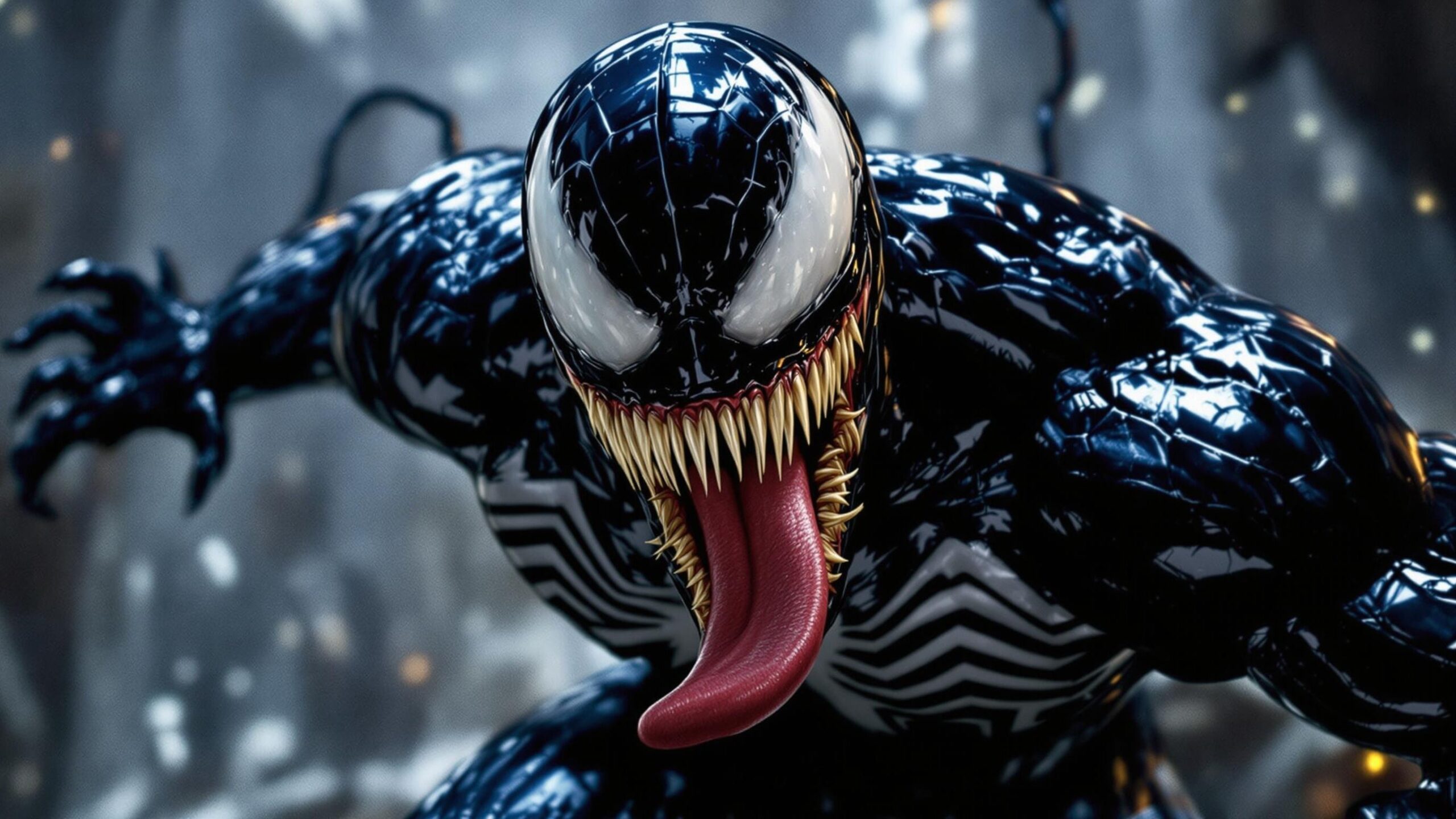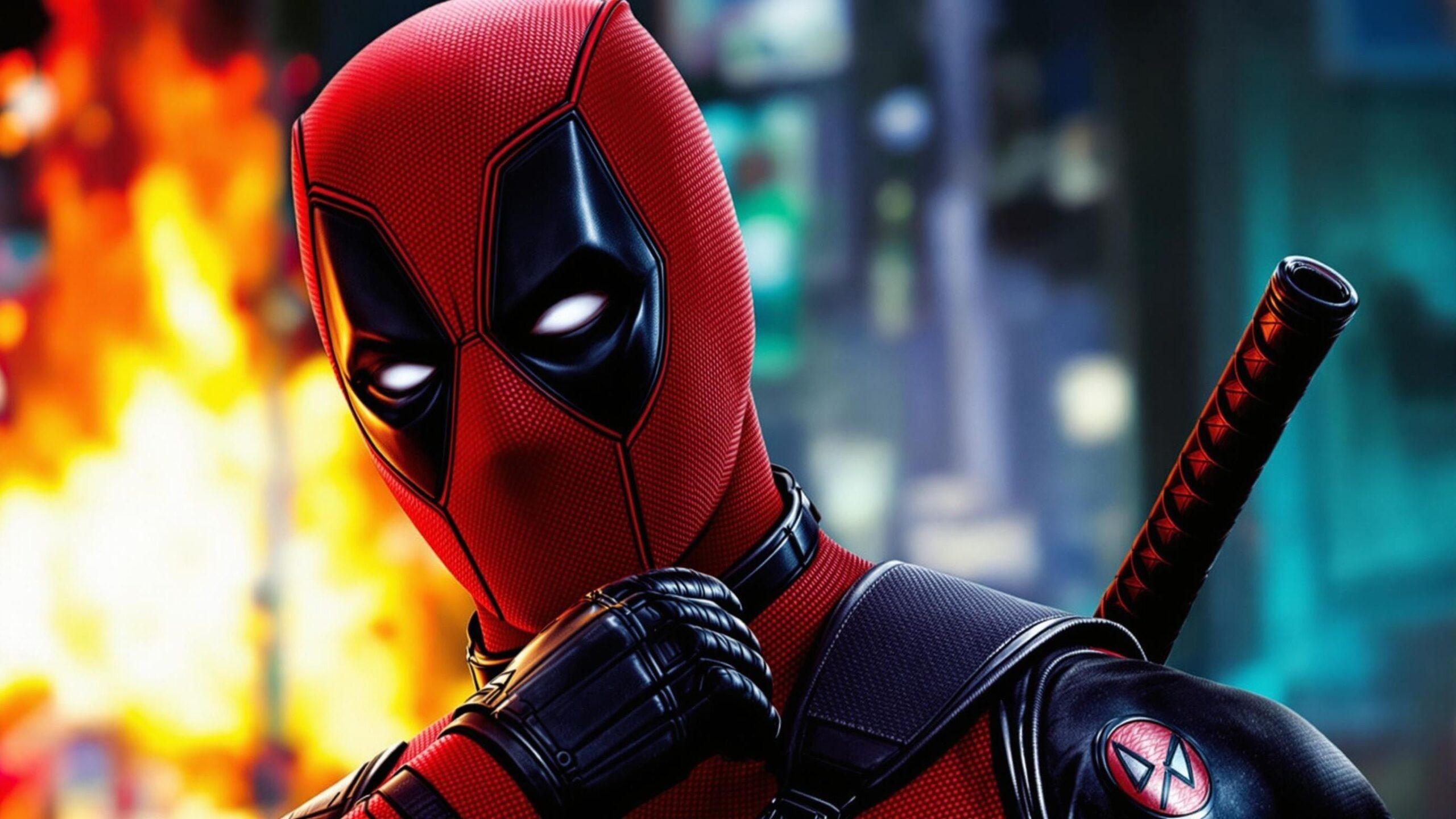From Villain to Antihero: The Origin of the Symbiote
In the beginning, Venom was terrifying. He wasn’t cracking jokes or awkwardly craving brains in convenience stores—he was stalking Spider-Man through dark alleys, dripping with malice and gooey black tendrils. First introduced in The Amazing Spider-Man comics during the late ’80s, Venom was the lovechild of two major Marvel events: the black alien suit Peter Parker first wore in Secret Wars, and the scorned, vengeful Eddie Brock, a disgraced journalist with a serious grudge against Spider-Man. When these two entities merged, they formed Venom—a hulking creature powered by rage, hatred, and the ability to mimic Spidey’s powers.
Venom was meant to be the ultimate nightmare. He knew Spider-Man’s identity. He had all of his abilities. And he looked like a demonic version of the hero himself, with razor-sharp teeth and an impossibly long tongue that seemed to writhe with a life of its own. The fans couldn’t get enough. Despite his villainous introduction, Venom immediately became one of the most popular characters in Spider-Man’s rogues’ gallery. But something interesting started to happen. The more fans saw of Venom, the more they realized—he wasn’t just a bad guy.
The Eddie Factor: A Man with a Code
Venom might’ve started as a villain, but Eddie Brock gave the character a unique edge. Eddie wasn’t out to destroy the world. He wasn’t some maniacal genius like Doctor Octopus or a crime boss like Kingpin. He was a man who felt wronged—by the media, by Spider-Man, and by life. When the symbiote found him, he was vulnerable, furious, and full of potential. Their bond was built on mutual rejection: the alien suit rejected by Peter, Eddie rejected by society. Together, they didn’t just become a monster. They became a new kind of entity.
And despite all the drooling and death threats, Venom developed a moral compass—albeit a twisted one. He wouldn’t hurt innocents. He even protected the downtrodden. His early storylines showed him saving lives while battling Spidey, insisting that he only wanted justice in his own warped way. It wasn’t long before fans started rooting for him. Here was a “villain” who could out-muscle Spider-Man and still rescue a kitten from a burning building. He wasn’t evil—he was misunderstood. And readers love a redemption arc.
The Lethal Protector Era
Venom’s transformation from villain to antihero was solidified in the early ’90s with the comic mini-series Venom: Lethal Protector. In this story, Eddie and the symbiote relocate to San Francisco and attempt to start fresh. No longer focused on destroying Spider-Man, Venom becomes a violent, unpredictable, but oddly honorable vigilante. He takes on new threats, battles other symbiotes, and even defends the homeless. It’s the first time we really see Venom working for the “good guys”—just with a lot more biting.
This era was crucial. It showed that Venom could headline his own stories. He wasn’t tethered to Spider-Man’s shadow anymore. He had his own voice, his own enemies, and a strangely appealing code of ethics: protect the innocent, punish the guilty, and eat anyone who deserves it. He was brutal but principled, messy but magnetic. Fans ate it up (pun intended).
Venom wasn’t interested in being a hero in the traditional sense. He wasn’t wearing a cape or delivering grand speeches. He was a force of nature with a weird sense of justice. That’s what made him compelling. He wasn’t perfect—he was trying. And that made him more relatable than half the heroes in the Marvel Universe.
The Symbiote as a Character
Part of what makes Venom stand out from other antiheroes is the fact that he’s not just one person. He’s two. The symbiote isn’t a weapon or a costume—it’s a character. It speaks. It craves. It loves Eddie, fights with him, saves him, betrays him, and jokes with him. Their relationship is the heart of the Venom mythos, and it’s a wild, codependent, occasionally toxic partnership that feels more real than most comic romances.
The banter between Eddie and the symbiote is part buddy comedy, part horror movie. One moment, they’re arguing over whether it’s okay to bite off someone’s head; the next, they’re protecting a child or stopping a robbery. The symbiote, for all its alien instincts, grows and changes. It learns from Eddie. And Eddie, despite his gruffness, slowly learns to rely on and even care for the creature.
This duality—the Jekyll and Hyde of superhero storytelling—is what keeps Venom fascinating. You’re never just watching one person. You’re watching a team. A dysfunctional, hilarious, slightly goo-covered team that somehow makes it work.
Venom in Pop Culture: The Movie Breakthrough
For years, Venom’s reputation rested in comics and animated shows, with fans eagerly awaiting his big-screen debut. Unfortunately, his first cinematic appearance in Spider-Man 3 (2007) left a bad taste in many mouths. Played by Topher Grace, that version of Venom lacked menace, charm, and most of the character’s signature personality. Fans were disappointed. But the symbiote would get his chance at redemption.
Enter Venom (2018), a film that shouldn’t have worked—but absolutely did. With Tom Hardy playing Eddie Brock, the movie leaned fully into the bizarre buddy dynamic between man and monster. It was part horror, part romantic comedy, and part action blockbuster, with an unexpected amount of heart. Hardy’s Eddie was sweaty, jittery, and constantly arguing with a voice in his head. And that voice? Hilarious.
The movie played with expectations. It wasn’t grimdark like The Dark Knight, nor was it brightly heroic like Iron Man. It was weird, wacky, and gleefully violent. And fans loved it. Venom’s “we are Venom” line became iconic. His lobster tank dive became internet legend. Suddenly, a character who once terrified Spider-Man was being cheered on by audiences of all ages.
The sequel, Venom: Let There Be Carnage, doubled down on the absurdity. The film dove into Eddie and Venom’s “relationship,” even framing them as a bickering couple going through a breakup. It was funny, chaotic, and surprisingly emotional. At this point, Venom wasn’t just an antihero—he was a leading man.
The Evolution of a Hero
Venom’s journey from villain to hero wasn’t overnight. It was messy, filled with setbacks, moral dilemmas, and gallons of alien goo. But it was also deeply satisfying. Over the years, we’ve seen him evolve from a revenge-driven nightmare into a complex protector. He’s battled his own kind, stood against cosmic threats, and even wielded the power of a god during storylines like King in Black.
Eddie Brock, once a bitter ex-journalist, became a father. A leader. A multiverse-level player. And the symbiote? It became more than just an alien—it became a legacy, bonding with new hosts, forming new heroes, and expanding the mythology far beyond Earth.
What makes Venom’s evolution so compelling is that it never feels forced. He doesn’t suddenly decide to be good. He struggles. He backslides. He has to learn what heroism actually means. And when he finally makes the right choice—when he saves instead of destroys—it feels earned. Because Venom isn’t about being perfect. He’s about being better.
Venom’s Impact on the Superhero Genre
Venom changed the game. He showed that a character could be terrifying and lovable. That a story could be gross and heartfelt. That a movie could feature a man biting heads off while also making audiences laugh and root for him. In a world dominated by squeaky-clean superheroes, Venom was the glorious mess fans didn’t know they needed.
He also paved the way for other unconventional heroes. If Venom could headline a billion-dollar movie, why not Deadpool? Why not Morbius (well… okay, maybe not Morbius). But the point remains: Venom proved that audiences were hungry for something different. Something darker. Something toothier.
His success redefined what it meant to be a “hero” in modern storytelling. He wasn’t noble. He wasn’t polished. He was flawed, funny, and feral—and people adored him for it.
The Monster with a Heart
Venom’s journey is the ultimate redemption arc—not just for the character, but for how we view heroism. He began as a vengeful monster, hell-bent on destruction. But over time, he found purpose. Connection. Love. He didn’t stop being dangerous—but he learned when to fight, and who to protect.
And that’s what makes Venom a hero in his own right. Not because he’s perfect. Not because he wears the right colors or recites noble catchphrases. But because he keeps choosing to do better—even when it’s hard. Even when he’d rather just eat the villain and be done with it.
In a world full of gods, billionaires, and super-soldiers, Venom stands out. He’s weird. He’s wild. And he’s got a voice in his head that just won’t shut up. But through it all, he’s proven that anyone—even a disgraced reporter bonded with a flesh-hungry alien—can become a hero.
As long as they try. And maybe don’t eat too many people.




